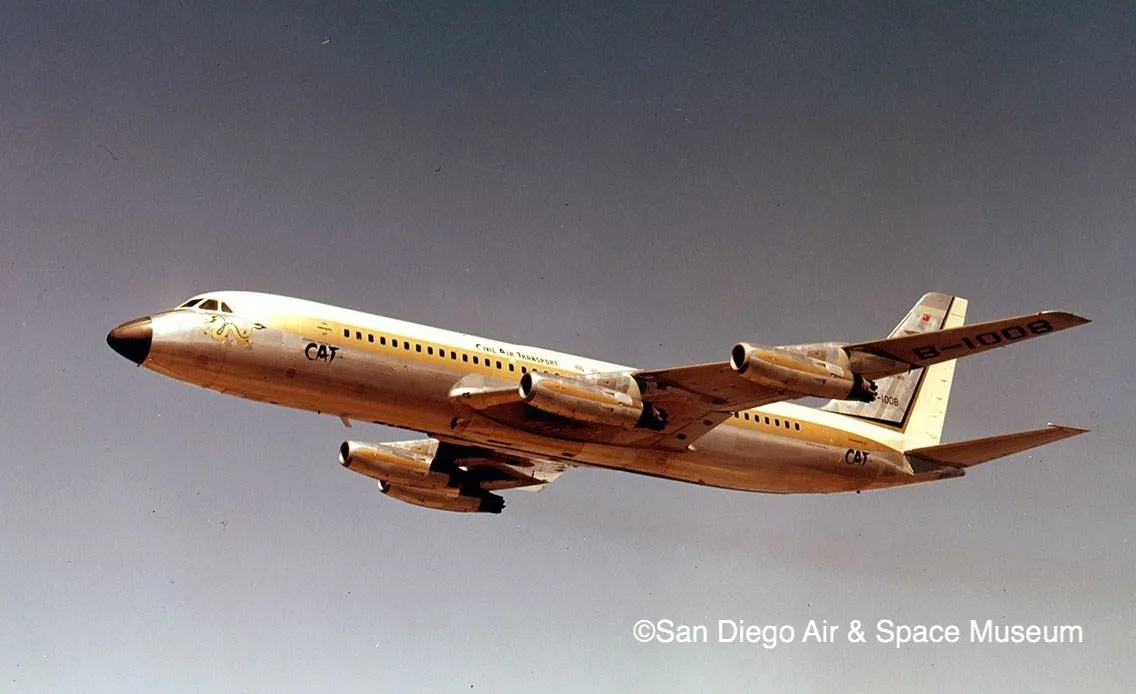
Convair jets: Gas guzzling madness
Jul 07, 2021

Convair jets emerged during the mid-20th century, known for their distinctive design and powerful performance. However, they quickly gained a reputation as gas guzzlers due to their inefficient fuel consumption, a consequence of their large engines and aerodynamic shapes. These aircraft, while innovative for their time, often left environmentalists and airline operators concerned about their carbon footprints and operational costs. Despite these drawbacks, Convair jets were celebrated for their speed and capacity, making them a popular choice for commercial airlines. Their legacy remains a testament to the era's engineering ambitions, even as the industry shifted towards more fuel-efficient technologies.
As aviation enthusiasts look back at the era of Convair jets, it’s hard not to notice the significant impact these aircraft had on commercial aviation. Although Convair jets were once considered marvels of engineering, they also earned a reputation for being gas guzzlers. This article delves into the fascinating world of Convair jets, exploring their history, design features, and the implications of their fuel consumption.
The Rise of Convair Jets
Convair jets, manufactured by the Convair division of General Dynamics, became prominent in the 1950s and 1960s. The Convair 880 and Convair 990 were two of the most notable models in this series. Designed for speed and comfort, these jets aimed to compete with other major players in the aviation industry, such as Boeing and Douglas.
Fuel Efficiency Challenges
Despite their innovative designs, Convair jets faced significant challenges regarding fuel efficiency. The engines used in these aircraft were not as advanced as those in some of their contemporaries. This resulted in higher fuel consumption, which was a major drawback for airlines operating under tight budgets. The term "gas guzzling madness" perfectly encapsulates the struggles airlines faced with Convair jets.
Comparative Fuel Consumption
To understand the fuel efficiency issues of Convair jets compared to other aircraft, we can look at a comparative chart that highlights the fuel consumption of various jets during their operational years:
| Aircraft Model | Fuel Consumption (Gallons per Hour) | Passenger Capacity | Range (Miles) |
|---|---|---|---|
| Convair 880 | 4,000 | 100 | 3,000 |
| Convair 990 | 4,500 | 100 | 3,500 |
| Boeing 707 | 3,500 | 140 | 3,500 |
| Douglas DC-8 | 3,800 | 120 | 3,000 |
The Implications of Fuel Inefficiency
The fuel inefficiency of Convair jets had several implications for airlines and passengers. Higher operational costs forced airlines to reconsider their fleet compositions. The economics of flying were shifting, and with the rising prices of aviation fuel, Convair jets began to fall out of favor. Airlines that operated these models faced tough decisions about their future.
Legacy of Convair Jets
While Convair jets may be remembered for their gas guzzling tendencies, they also left behind a legacy of innovation and design. The Convair 990 featured a sleek design that was ahead of its time, and it boasted a cruising speed comparable to the Boeing 707. Despite their drawbacks, these aircraft played a pivotal role in shaping the future of commercial aviation.
Modern Fuel Efficiency Standards
Today, fuel efficiency has become a critical factor in the design and operation of commercial aircraft. The aviation industry has made significant strides in developing more fuel-efficient engines and aerodynamic designs. Modern aircraft are designed to minimize fuel consumption, reflecting a broader commitment to sustainability in air travel.
Conclusion
In retrospect, Convair jets represent a fascinating chapter in the history of aviation. Their contributions to jet travel were substantial, but their reputation as gas guzzlers cannot be overlooked. The lessons learned from the operational challenges of Convair jets have informed the development of more efficient aircraft today. While nostalgia may surround these jets, it is crucial to recognize the importance of fuel efficiency in the aviation industry as we move forward.
The journey of Convair jets illustrates the delicate balance between innovation and practicality in aviation. As we reflect on the past, it becomes clear that the future of air travel will be shaped by efficiency, sustainability, and technological advancements, leaving behind the era of gas guzzling madness.
Related Articles

Explore Thailand: The Best Islands to Visit for Paradise, Adventure, and Relaxation

The Ultimate Guide to the Best Islands in Thailand for Your Next Getaway

Do babies need passports? How to get a passport for a newborn

How to get a U.S. passport fast: here’s how to expedite the process

What is Mobile Passport Control: 5 reasons why you should use it

SENTRI vs. Global Entry: A detailed guide

Do you need a passport to go to the Bahamas? Let’s find out

Do you need a passport to go to Mexico? A detailed guide

Do you need a passport to go to Canada? We got the answer

Do You Need a Passport for a Cruise: An Essential Travel Guide

Booster Seat Requirements: All the Rules to Follow in Your Rental Car

What Are the World’s Most Powerful Passports, and How Does Yours Rank?

How to Take a Passport Photo at Home: A Helpful Guide

You've got to have heart! Southwest's new livery

Your opinion: Should water be free on low cost carriers?

Young women bolder than guys as solo travellers
